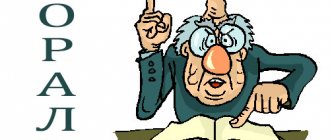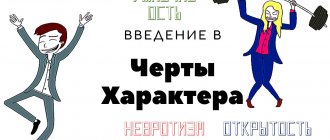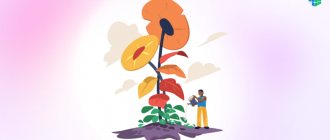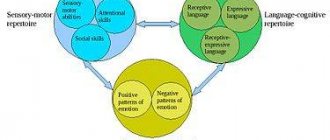| « | You've read many stories where there are two sides with different morals, but where there is no such thing as moral conflict. It's almost always clear what the author thinks about which side you should be on. The Lord of the Rings does not ask whether Saruman might eventually develop industry. Atlas Shrugged doesn't invite you to wonder with the author whether capitalism is a good idea or whether John Galt's path was the only right one; instead, anyone who goes against capitalism has been portrayed as a weak, despicable person with a penchant for crime. | » |
| — E. Yudkowsky, “A Quick Guide to Smart Characters” | ||
Imagine a plot in which the hero is faced with a moral choice.
Why, a real sadistic choice. Become a dissident defector and commit treason for the sake of an idea, or remain faithful to the end and be a villain by virtue of your position? Resurrect your dead beloved with the help of black magic, placing yourself and her on the other side of the law and morality, or leave her in the grave? Side with a totalitarian peacemaker and prolong the agony of a rotten, corrupt and authoritarian, but stable and relatively comfortable dying empire for an indefinite number of decades, or support a well-meaning extremist and destroy it for the vague hope of building something more worthy from its ruins? You and the hero are rushing between options, painfully weighing the pros and cons, if the work is ongoing, and also participating in holivars on the topic of this choice. And as a result... The opposite side is actually much worse than the hero’s comrades-in-arms, they are simply hiding behind beautiful slogans. Those resurrected by necromancy always return differently. According to the plan of a well-meaning extremist, the rotten empire will be replaced by totalitarian tyranny with mass torture, the cult of the Leader and the daily preventive execution of neighbors and stray dogs. In short, the hero has no choice, for example, because one option is obviously and objectively worse than the other. Or because circumstances chose for the hero. Or because the dilemma in the light of subsequent events in the plot turned out to be completely unimportant. Important! This only includes situations in which the hero knows the consequences of the choice in advance. If, after making a choice, it suddenly turns out that the hero was wrong and did much worse than he expected, then this is a moral frame-up. If the hero could predict the situation and understand which option was worse, but justifiably stepped and made the wrong choice, then this is a benign and never merged moral dilemma.
Two definitions
This beautiful and not very clear word has two meanings. One belongs to the realm of logic or philosophy, and the other to psychology or sociology. Let's look at both definitions:
- A combination of two judgments that are opposite in meaning, but without the ability to formulate a third.
- A situation in which you have to choose between two solutions, since they are opposite in meaning and give rise to difficulties of the same scale.
Dilemma
It is the second meaning that is most often implied in book and journalistic speech. Hence the expressions: “unsolvable dilemma”, “dangerous dilemma”, etc. In a certain sense, it is consonant with the well-known expression “there is no third option.” Such situations are not uncommon in everyday life. The simplest example: a person needs to decide whether to stay in a well-paid job, which is a burden to him, or change it to a more pleasant one, but one that brings in significantly less income.
Who and when coined the term
This is a Greek word that literally means "double lemma". Dis means double and lemma means guess. Currently, it is customary to translate this concept as “problem”.
In mathematics, a lemma is an auxiliary theorem that allows one to prove another theorem. It has no independent value.
@ru.wikipedia.org
This term is attributed to Lorenzo Valla. As early as the 15th century, he stated that the definition was a suitable equivalent to the Greek dilemmaton. But the new term took a long time to take root and became more widespread only at the end of the 16th century.
Dilemma is a common concept. It is used in mathematics, logic, economics and in everyday life. Every day, many people face difficult choices between two opposing sides. This word has long entered the lexicon of many and is used quite often. The concept is also divided into several different types. From this emerge various examples of difficult choices that a person may face.
Varieties
So, what is the dilemma? Something that often happens in life. In addition, there are different types of this phenomenon.
For example, in a purely scientific definition, a constructive and destructive option are distinguished. You can read more about them in a logic textbook. And in a well-known sense, social dilemmas are distinguished, including: ethical, moral, environmental, as well as situations with intriguing names “prisoner’s dilemma”, “secretary’s dilemma” and “Samaritan’s dilemma”. Let's take a closer look at some of these varieties.
Ethical dilemma
Ethics is a branch of philosophy that studies morality (the rules of conduct accepted in a given society) and morality (can be synonymous with morality or mean the rules of life of a particular individual). The range of ethical issues: good and evil, freedom and responsibility, the meaning of life, conscience, duty, happiness.
Thus, an ethical dilemma is a situation in which these and similar issues are involved. Most often, you have to choose between what is right (from a moral point of view), but unprofitable, and what is bad for others, but beneficial to the chooser.
In social relations, the ethical dilemma is, for example, consumer safety, rights and discrimination, professional ethics, corruption, etc.
Examples of exercises
There are so many great ways to visualize and explain dilemmas in literature. Teachers can customize the level of detail and number of cells needed for projects depending on the time and resources available in the classroom.
- Identify the dilemma in the piece you read.
- Create a storyboard that shows and explains the dilemma of a literary work. Use specific quotations from the text that highlight and explain the two equally unpleasant options associated with the dilemma.
- A storyboard is a real life dilemma that involves internal and external conflict.
- Create custom worksheets for students to complete for specific text.
- Create a poster showing an example of a dilemma in literature or real life.
Common core
- ELA-Literacy.RL.9-10.2: Determine a theme or central idea of a text and analyze in detail its development over the course of the text, including how it emerges and is shaped and refined by specific details; provide an objective summary of the text
- ELA-Literacy.RL.11-12.2: Determine two or more themes or central ideas of a text and analyze their development over the course of the text, including how they interact and build on one another to produce a complex account; provide an objective summary of the text
- ELA-Literacy.RL.9-10.3: Analyze how complex characters (eg, those with multiple or conflicting motivations) develop over the course of a text, interact with other characters, and advance the plot or develop the theme
- ELA-Literacy.RL.11-12.3: Analyze the impact of the author's choices regarding how to develop and relate elements of a story or drama (eg, where a story is set, how the action is ordered, how the characters are introduced and developed)
Moral dilemma
One of the most difficult situations you can ever find yourself in. It is necessary to choose one of mutually exclusive options, and both will not bring anything good.
Moral dilemma is a common plot twist in works of fiction. These cases usually involve death. For example, the main character must choose whether to sacrifice himself to save others or not; which of the two friends should he help, because he manages to save only one; whether to abandon the wounded man to bring help; during a difficult birth, save either the child or the mother, etc.
People usually prefer not to think about such questions. And for those who reflect, the hypothetical choice may not coincide with the real one if a real dilemma arises. This, which is important, often happens in extreme situations.
How to solve
Any solution to a dilemma is a search for the safest option of two or combining them into something like a compromise. To achieve this, a person needs to work internally with himself.
You can follow this algorithm:
1. State what the dilemma is.
2. Collect and analyze known information from all sides.
3. Look for other options besides the two opposite and obvious ones. Check each solution found against:
- correctness (on a personal moral scale);
- utility;
- morality;
- legality.
4. Eliminate completely unacceptable options from the list of solutions.
5. By the method of elimination, leave one thing.
6. Check the selected solution in three ways:
- imagine doing this; what do you feel, do you want to do things differently;
- imagine how the decision you make will affect your family;
- imagine the reaction of your social environment (friends, colleagues, neighbors, acquaintances); can you survive this?
8. Provide justification for the decision made (what it will give you or what it will save you from).
9. Analyze the negative consequences that this decision may lead to.
Psychological help online
National survey
The American Psychological Association (APA) was founded in 1892 and has been grappling with ethical issues for 60 years without a formal code to address them. In the early days of the association, these problems were quite simple, since the association itself was an organization of college teachers. Mainly, ethical issues related to plagiarism and academic freedom. However, over time, the need for a formal code for dealing with ethical issues became urgent, and to create one, it was decided to use an innovative empirical method that used real cases from the practice of a representative sample of respondents - members of the association. As a result, the code contains both general principles and paragraphs explaining them, which are specific and are likely to change and expand. In order to preserve the unique nature of the code, it was decided that changes to the code would be made both as a result of discussions among members of the association and based on additional precedents. These precedents represent not so much the decisions of the Ethical Standards Committee, but the results of the decisions that psychologists make on a daily basis in their work.
METHOD
The APA developed a questionnaire that, along with a cover letter, was distributed to its members asking for their experiences with ethical dilemmas. Using a random number table, 1319 respondents were selected.
RESULTS
Responses were received from 679 psychologists, that is, from 51% of the sample. Respondents reported 703 instances of ethical concerns, which were grouped into 23 categories (Table 1).
Table 1 - Categories of Ethically Difficult Incidents
| Category | n | % |
| Confidentiality | 128 | 18 |
| Uncertain, "dual" or conflicting relationships | 116 | 17 |
| Sources and methods of payment for services, payment terms | 97 | 14 |
| The situation at the university, dilemmas related to teaching and its quality | 57 | 8 |
| Forensic psychology | 35 | 5 |
| Research | 29 | 4 |
| Colleagues' behavior | 29 | 4 |
| Questions related to sex | 28 | 4 |
| Data evaluation | 25 | 4 |
| Questionable or potentially harmful intervention | 20 | 3 |
| Competence | 20 | 3 |
| Codes of Ethics and Ethics Committees | 17 | 2 |
| Psychology at school | 15 | 2 |
| Publications | 14 | 2 |
| Help for the needy | 13 | 2 |
| Supervision | 13 | 2 |
| False advertising | 13 | 2 |
| Psychology in Organizations | 9 | 1 |
| Medical issues | 5 | 1 |
| Termination of work | 5 | 1 |
| Ethnicity | 4 | 1 |
| Treatment records | 4 | 1 |
| Other | 7 | 1 |
Below is a breakdown of each category.
Confidentiality
The greatest number of ethical dilemmas related to confidentiality. Here are some examples.
— The girl had an abortion without the knowledge of her adoptive parents. I paid due attention to her opinion regarding the lack of possible support from parents. But I was worried that our relationship would be damaged if it turned out that I knew about her decision and they didn't. — My psychologist client told me that he violated ethics, but I can’t tell anyone about it. — My client said that she was raped. The police did not believe her and did not open a case (due to her mental disorder). Another client of mine described how he raped a woman (my client).
Perhaps unsurprisingly, confidentiality is the most common ethical dilemma. Although confidentiality is considered the most fundamental and overarching ethical principle, research shows that it is the most common subject of intentional violations of ethical standards, with more than half of respondents admitting to having unintentionally violated confidentiality. These incidents raise many questions, but the main ones are two areas that are not addressed by the current version of the code of ethics. First, the boundaries of confidentiality should be clearly stated when psychological services are provided by multiple individuals (including administrators and supervisors) or multiple clients (for example, in a clinic, in a therapy group, in the case of couples and family therapy). Secondly, some cases, which concern, for example, mandatory disclosure of information about child abuse, illustrate situations in which psychologists believe that it is better to violate confidentiality. Most psychologists have likely encountered a situation where following rules seems clinically and ethically wrong because it puts the client or third parties at risk. In extraordinary circumstances, a breach of confidentiality may be ethically acceptable.
Uncertain, "dual" or conflicting relationships
The next most common challenge is establishing clear, reasonable therapeutic boundaries around the therapist-client relationship. Here are some examples:
“I worked with the child and soon realized that there was a mutual attraction between me and his mother. My work with the child brought positive results. However, I decided to transfer him to another therapist, despite the result achieved, in order to avoid a “dual” relationship.
Overall, this incident suggests that dual relationships and their acceptability need to be more clearly defined in codes of ethics. Further, the code should address the principles to be followed by therapists working in small towns, villages and remote locations.
— I work in rural areas. I am also part of a religious community... People come to me because they already know me... The principle of prohibiting "dual" relationships allows me to adhere to ethics (but at the expense of possible offense and misunderstandings), but does not help in any way in the real circumstances in which I Working.
Third, the code should clarify the difference between “dual” relationships and casual contacts outside of practice (for example, a chance meeting between therapist and client outside the office).
— Six months ago, a client with whom I worked for 3 years began dating my best friend. I could write a book about what this led to! I sought legal and therapeutic help. My client and my girlfriend are now living together and I transferred him to another therapist which has left him furious and feeling abandoned. I myself worked with a psychologist for several months to “reach out” to this client. When I found out about the affair, I soon told my friend that we needed to take a break from communicating. I don’t know if we will be friends in the future and on what terms.
Sources and methods of payment for services, payment terms
The third most common source of ethical concerns was financial. 56 incidents were related to insurance conditions. Inadequate insurance coverage for clients in dire need of help created a serious ethical dilemma for the therapist when he/she was unable to provide adequate care to the client (“The insurance company is forcing me to change the way I work with the client due to financial constraints insurance") or was forced to be not completely honest with the insurance company). Other reported incidents included billing for missed appointments, paying for family therapy as individual therapy, misrepresenting a client's condition to obtain insurance, and prescribing unlicensed medications. Here are examples:
— A seven-year-old boy was brutally sexually assaulted. I assessed the situation and recommended 6 months of therapy. The insurance company approved 10 sessions with a non-specialist, when there is no effective program that can be completed with a seven-year-old child in 10 sessions. — A married woman turns to a psychologist. Her husband pays for the sessions. After several meetings, it becomes obvious that the client is planning to leave her husband, who does not know about it. The therapist helps a client cope with a situation that is having negative consequences for her husband, and the husband pays for it.
The situation at the university, dilemmas related to teaching and its quality
This group of dilemmas concerned the vague rules of educational institutions. 13 respondents noted the pressure they were subjected to when assigning grades, 8 respondents expressed concern about underqualified graduates. Here are examples:
“My colleagues and I are concerned about the emotional instability and lack of knowledge of several students admitted to an APA-approved educational institution. “I have had students with serious emotional problems who graduated from a counseling psychotherapy program and became “psychotherapists.”
Forensic psychology
Some respondents used slurs (such as the word "whores") to refer to psychologists who give false testimony in court. These psychologists are ready to work for anyone who pays.
- They testify in cases of sexual abuse of children and say that the offender has been “cured” and will not break the law again (“crystal ball fortune-telling”)
Research
12 respondents noted that they were subjected to pressure regarding the procedure and results of the study. Here are examples:
— I am participating in a project that received a grant. As I walked past the secretary's desk, I saw the project manager's report for the funding source. In it, the number of participants in the study was 2 times greater than in reality. — The director of a speech-language clinic wants to use patient data without obtaining their consent.
Colleagues' behavior
4% of respondents spoke about problems in relationships with ambitious colleagues. Some were unable to confront colleagues who violated ethics.
“As a member of the department, it was difficult for me to communicate with a colleague about whom students were constantly complaining. “I see adopted children who cannot be responsible for themselves, and social workers who are not interested in them. How can I maintain a good working relationship with someone who doesn't do their job?
Questions related to sex
4% of respondents were concerned about the ethics of sexual relations.
— Not often, but sometimes, my clients express interest in a romantic relationship with me. — A student working with a client for a semester finished work at the end of the semester as planned and then began a sexual relationship with the client. I think the APA should take cases like this more seriously.
The current APA code of ethics does not explicitly address the therapist-client relationship after therapy has ended, raising questions about the APA's position. The 13th revised draft of the code includes the wording: “Psychologists do not engage in sexual relationships with current or former clients,” while the 15th draft contains proposed amendments regarding allowing relationships in “extraordinary circumstances” and “only after one year.” .
Data evaluation
These dilemmas concerned doubts about the sufficient competence of those who (a) administer psychological tests and (b) draw conclusions based on poor quality data or ignoring important data sources.
“I am often asked to interpret test results without allowing me to see the client. I refuse to give an estimate without contact with the client. — Psychologists use the results of a computer test as the only source of assessment, without integrating them with other sources of data.
Questionable or potentially harmful intervention
Some respondents expressed doubts about the effectiveness, legitimacy and safety of treatment methods and conditions.
“My patient went to college and left town. Shortly before leaving, she told me a story about early sexual abuse. These memories tormented her very much. She refused to see a therapist in college. She asked to continue our sessions over the phone. I'm not competent in this. Can I work by phone? Will this be therapy? If I refuse, will I be abandoning my client? — Colleagues... who answer the phone 4-5 times per session. How ethical is this?
Competence
About 3% of the dilemmas involved working in areas that were not well known or losing competence over time or as a result of stress.
— Clients ask me to work with them, but I am not competent enough to deal with their problem. “I often feel exhausted and burnt out, but I don’t have enough resources for personal therapy and supervision. How do I know my limit?
Codes of Ethics and Ethics Committees
The 11 dilemmas in this area related to ethics, licensing, and relevant committees. 3 incidents were related to committees working too slowly. Some respondents noted that the current code of ethics is trivial, lacks specificity, and does not adequately reflect customer care.
— My professional association, the APA, believes that my religious beliefs (for example, that homosexuality is wrong) are unethical. Should I leave the association or give up religion?
Psychology at school
This group of dilemmas concerns the desire of therapists to act in the interests of children despite pressure from the administration.
— A developmentally delayed boy is isolated from the rest of the class because of his behavior. The school hires me to work with his behavior while he is still isolated. I believe it should be integrated into the classroom. Whose interests am I protecting?
Publications
These issues included expressing gratitude to those who did not participate in the publication or not expressing it to those who did, as well as teachers' use of student work in their articles.
Help for the needy
Respondents expressed concern about helping the poor, unemployed, and homeless.
— I worry that those who work with the homeless do not receive enough educational and financial resources — How to help people with low incomes?
Supervision
Dilemmas in this category related to supervisors being dishonest and disrespectful.
— A colleague was subjected to insults from a supervisor, public criticism, and discussion of her personality with third parties. In fact, the problem was that he did not like her therapeutic method.
False advertising
These dilemmas concerned how professionals presented themselves and their work in false or questionable ways.
— My clinic wants to advertise my services in a manner that I find offensive and unprofessional.
Psychology in Organizations
These problems concerned the interference of company management in the work of the psychologist, especially in the matter of maintaining employee confidentiality.
Medical issues
About 1% of respondents focused on medical issues.
— The parent of a ten-year-old child refuses to take him for a medical examination. Should I stop working with my child and his family?
Termination of work
These dilemmas relate to the cessation of therapeutic work and its explanation. Here are examples:
— My biggest “ethical crisis” is related to stopping work with clients who were victims of sexual abuse in childhood and in whose lives I was involved for 5-7 years. — My colleague went on vacation for 4 months and “handed over” her client to me during this time. The client preferred me and did not want to return to my colleague, although she insisted that I convince the client to do so. Now I have doubts about what is best for the client and whether I should risk my friendship with my colleague.
Ethnicity
“Many clients, when they come to my office, are shocked when they see that I do not belong to the “ethnic mainstream.” So it takes me longer to connect with them.
Although the current code and its new draft versions prohibit discrimination on the basis of ethnicity, explicit attention is required to the question of whether combating racism is a therapist's ethical responsibility.
Treatment records
About 1% of the dilemmas involved what client information should be included in records, providing records to clients who did not pay for sessions, and inadvertently destroying records.
Conclusion
An empirical approach to the drafting of the code of ethics allowed for the experience of APA members to be taken into account, which ensures its relevance and applicability. No code can address every situation, but this approach reduces the risk of ending up with an ethical dilemma. Authors: Kenneth S. Pope, Valerie A. Vetter Translation: Polina Gaverdovskaya Studio











